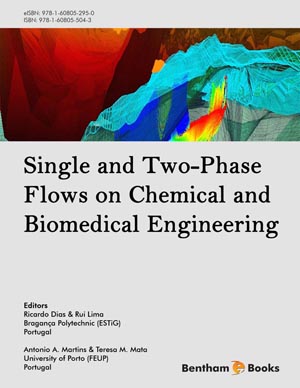Abstract
Hydrogenation of vegetable oils is an important process in the food industry because of its widespread application to produce margarines, shortenings, and other food components. Supercritical technology has proven to be a reliable alternative to conventional hydrogenation process because not only the trans isomer levels can be reduced, but also offers a clean, economic and environmental friendly process. Computational Fluid Dynamics (CFD) modeling applied to the supercritical hydrogenation reaction can be useful in visualizing and understanding the mass transfer phenomena involved. CFD is applied to the study of the catalytic hydrogenation of sunflower oil in the presence of a supercritical solvent. A mix of sunflower oil, hydrogen and supercritical propane (used as a solvent) is the flowing fluid. Their transport properties at high pressure are incorporated within a CFD commercial code in order to estimate them online within the simulation process. A 2D CFD model of a single Pd-based catalyst pellet is presented. Intra-particle and surface concentration profiles and surface mass fluxes for all species present in the mixture (oil triglycerides and hydrogen) are obtained and compared against experimental results. Different temperatures, flow velocities and particle sizes are studied and external and internal mass transfer phenomena are analyzed. External mass transfer coefficients for hydrogen and oil triglycerides are obtained and a correlation for estimating them is presented.
Keywords: Computational fluid dynamics, high pressure, supercritical fluids, hydrogenation, single phase flow, packed bed reactor, vegetable oils, mass transfer, trans fatty acids, food industry.






















